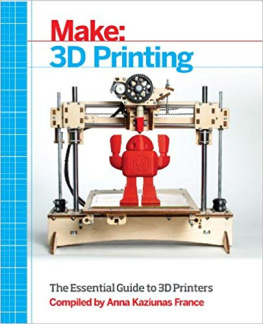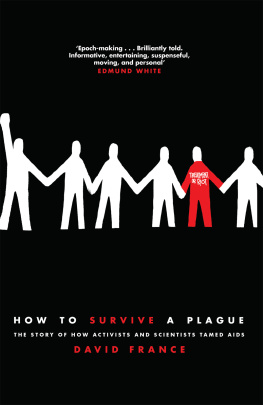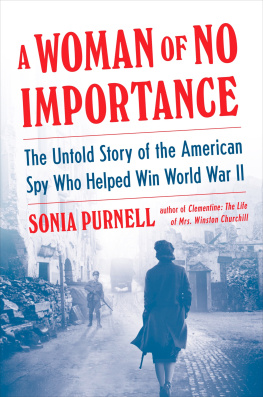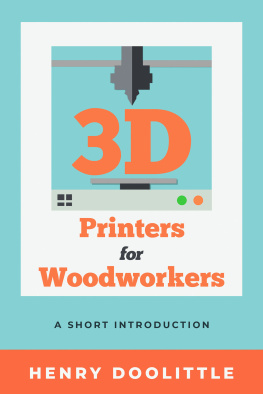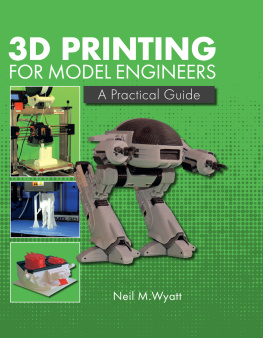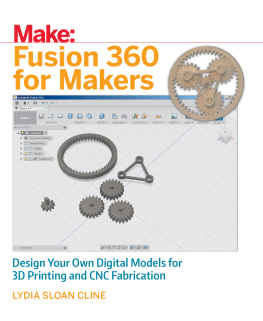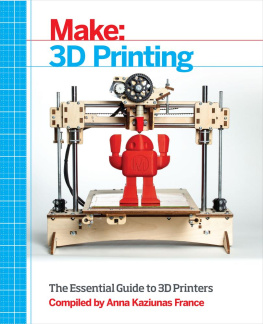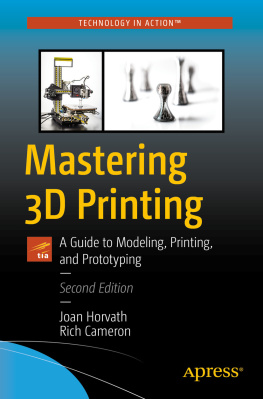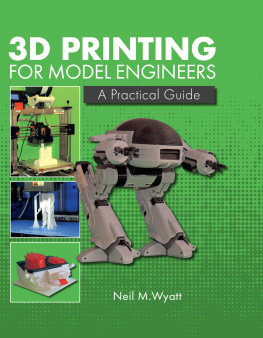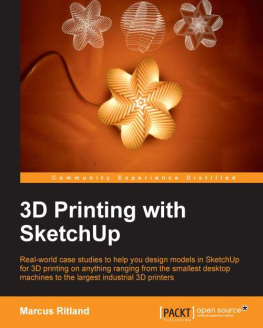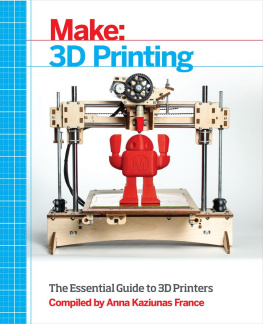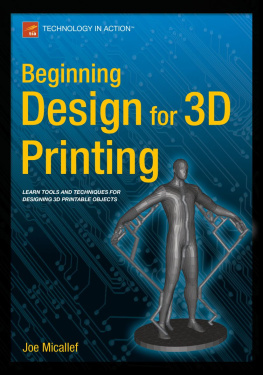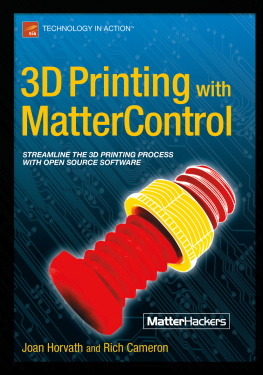Make: 3D Printing
Edited by
Anna Kaziunas France
Preface
Additive Personal Fabrication
Anna Kaziunas France
Welcome to Make: 3D Printing . Ive compiled the best projects, tutorials, and stories about 3D printing from MAKEs print and online publications, refreshed them for the latest developments, and added a few new pieces you havent seen elsewhere.
Personal Fabrication
This book contains stories and tutorials from and about makers who have embraced additive personal fabrication , a term that encompasses 3D printing activities at home, work, or school. Some of these makers are exploring not only DIY 3D printing, but creating scalable small businesses through the use of fabrication services for small batch custom manufacturing. Others create just what they need, just in time, from their desktop factory.
As it turns out, the killer app in digital fabrication, as in computing, is personalization, producing products for a market of one person.
Neil GershenfeldForeign Affairs November/December 2012
Although additive manufacturing has been the subject of some irrational media exuberance, its only part of the digital fabrication equation. As an instructor at the Fab Academy, a globally distributed rapid prototyping course where we turn codes into things, I taught a wide variety of digital fabrication techniques, often using subtractive methods and machines to achieve desired results.
This in no way diminishes the opportunities for creativity and expression that are made possible by 3D printing. Through 3D scanning and printing I have been able to quickly model and fabricate a variety of completely bespoke (and often last minute) items; from costumes to artwork to functional molds.
Part of the power of personal fabrication is directly tied to having easily accessible personal machines. Machine access combined with creativity and time pressure can lead to interesting mashups and materials choices.
When working on the scanning chapter of Getting Started with MakerBot (see tutorial).
A month later, the Kali necklace was joined by a belt and I incorporated it into a four armed sculpture I titled Self Portrait as Kali (see ). I created the body of the sculpture from several self scans that I combined digitally to create two sets of arms on a single torso. Both sets of arms are broken off at the forearms, as if the original scan was of an ancient statue that has been damaged over time. The final 3D model was sliced into 125 individual routed slices of 1/2 medium density fibreboard (MDF) that I fabricated on a large CNC (computer numerically controlled) router. I then assembled and painted the slices by hand. The belt and necklace, I also painted by hand and strung them over the assembled body. The finished sculpture has been displayed at several exhibitions, including the Bits to Its 3D printed sculpture show and the RISD Museum.
In many ways, 3D printing is currently the most personally accessible of all types of digital manufacturing. Prices have come down enough for many to afford to own their own printers, and desktop machine print quality has dramatically improved. Online printing services are readily available for those who cannot afford printers or whose materials needs go beyond printed plastic.
The world of personal fabrication is rapidly evolvingbecome part of it!
Figure 1. Self Portrait as Kali
Who This Book Is For
If you are interested in creating your own one of a kind or small batch customized creations using 3D printing processes, this book is for you.
If youre absolutely new to 3D printing and dont know a thing about it, youll want to read this book cover to cover.
If youve already got a 3D printer, but are ready to go beyond just printing designs you downloaded from the Internet, youd want to start by creating your own printable objects by learning 3D design with Tinkercad and creating 3D scans. Also check out the finishing section for tips on how to refine the appearance of your 3D prints.
Are you more comfortable with software than with hardware? If you are a designer who wants to prototype in a range of materials other than extruded plastic or a desktop 3D printer is out of your budget, check out the services and materials sections for a rundown of the range of companies that will print your designs in a rapidly growing number of exotic materials.
Contents of This Book
is an overview of the 3D printing hardware; the printers themselves, the basics of how they work, and what to expect in your experiences with them.
In , youll learn about the software toolchain required to take 3D printed designs to final printed object and how to design your own objects.
takes 3D model creation a step further with several tutorials on how to capture physical objects around you with 3D scanning. Youll also learn how to clean the scanned models for 3D printing.
discusses a the ever-expanding range of plastic filament available for desktop 3D printing. Youll also learn about industrial printing materials (and methods) for ceramics to metals available from 3D printing services.
deals with how and why to use 3D printing services instead of desktop manufacturing and details about the different service provider options available.
Several methods for finishing your for 3D printed objects are covered in , including changing the color or your prints with fabric dye, repairing broken prints and techniques to weather your prints to look like battered metal.
explores the plethora of possible personally fabricated creations that are possible through additive manufacturing; from humanoid robots to scanned artwork to fully customized prosthetics.
describes other ways to create 3D objects, from milling to creating food-safe molds for chocolate casting.
Anna Kaziunas France is the Digital Fabrication Editor of Maker Media. Shes also the Dean of Students for the Global Fab Academy program and the co-author of Getting Started with MakerBot . Formerly, she taught the How to Make Almost Anything rapid prototyping course in digital fabrication at the Providence Fab Academy. Learn more about her at her website and check out her things at her Thingverse page.
Conventions Used in This Book
The following typographical conventions are used in this book:
Italic Indicates new terms, URLs, email addresses, filenames, and file extensions. Constant width Used for program listings, as well as within paragraphs to refer to program elements such as variable or function names, databases, data types, environment variables, statements, and keywords. Constant width bold Shows commands or other text that should be typed literally by the user. Constant width italic Shows text that should be replaced with user-supplied values or by values determined by context.
This section signifies a tip, suggestion, or general note.
This icon indicates a warning or caution.
Using Examples
This book is here to help you get your job done. In general, if this book includes code examples, you may use the code in this book in your programs and documentation. You do not need to contact us for permission unless youre reproducing a significant portion of the code. For example, writing a program that uses several chunks of code from this book does not require permission. Selling or distributing a CD-ROM of examples from MAKE books does require permission. Answering a question by citing this book and quoting examples does not require permission. Incorporating a significant amount of examples from this book into your products documentation does require permission.

